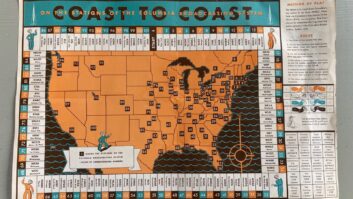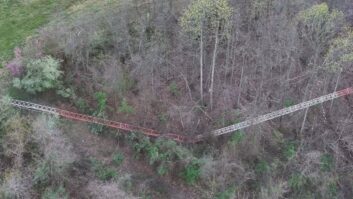EZ Maintenance is a Windows-based software package designed for tracking vehicle maintenance. It can be used for tracking your equipment as well.
The program includes scheduling and tracking capability, but also includes a historical section. It will even create workorders for equipment.
The software also produces maintenance calendars. Entry of equipment and subsequent maintenance can be bar-coded, expediting the initial description or subsequent maintenance and repairs.
In a day of consolidation, keeping a master list of equipment, maintenance and repair issues sounds like a time-consuming ordeal. It’s not. Initial data entry can be performed by an intern or secretary. The benefit to you is getting a handle on all your equipment and maintenance issues.
The EZ Maintenance software package runs $1,495. You can obtain more information at (661) 286-0041, or via e-mail to [email protected].
If the pricetag of this software scares you, Excel can be used to develop a poor-man’s maintenance record. Either way, the ability to track equipment, problems and spare parts will make your day more efficient.
. . .
(click thumbnail)Fig. 1: Nests made by mice are a fire hazard.
How does that nursery rhyme go, “Hickory, dickory, doc-tor … the mouse climbed up the contac-tor!”
If you’ve ever wondered how AM coupling units could catch on fire, Fig. 1 offers one method.
Mice seem to find the most comfortable array of fluff and feathers for making their nest. “Tinder-box material” describes it best.
They locate the nest in the worst places. In the case of Fig. 1, the contactor becomes a pretty loud alarm clock as it switches twice a day, jarring the nest’s occupants in the process. The picture is a reminder to check inside your phasor and base coupling networks periodically.
After the nest was cleared away, Fig. 2 shows one of the occupants posing for the camera, as he looked for his now-missing home! Mice are industrious, however; and unless every crack and crevice is plugged, they will return and rebuild their nests overnight.
(click thumbnail)Fig. 2: This fellow won’t be without a nest for long, if you let him rebuild.
When I was doing contract work, we were called in to clean out the coupling networks of a four-tower array. The station had been off the air for several months, but the owners intended to return the station to regular broadcasting.
We diligently swept, vacuumed and scrubbed the components till everything was clean. We secured the doors and left. A couple of days later, the GM came by to inspect our work. Imagine the surprise when I’m greeted by a cursing customer, saying we had ripped him off!
I had no idea what he was talking about. We went back to the site, opened the network doors and behold: new nests, like they’d never been removed in the first place. One of my associates wisely had snapped a few pictures while we worked, and of the once-clean coupling networks as well. Our reputation rescued, we used some sealant to fill all the cracks and holes. This prevented the mice from returning.
The pictures even got us an apology from the manager. Keep a little disposable camera in your toolbox, especially if you are doing contract work.
Looking to keep this from happening to you? The first line of defense is to seal up the coupling networks or doghouses.
A good way to check for rodent or insect access holes is to visit the site at night. While the station is off the air, plug in a bright trouble lamp, close the door of the coupling network or doghouse and inspect the outside, looking for light leaks. If you carry a caulk gun or expandable foam tube, you can spot-plug any small holes as you find them.
You’ll be amazed at the holes, cracks, and crevices that the light will reveal. Each offers an entrance for vermin, so seal them up.


. . .
Jeff Caudell of the Clear Channel cluster in Harrisonburg, Va., is a frequent contributor to Workbench. Fig. 3 shows a bargain wire trough that Jeff installed in his rack room to get wiring from his punchblock wall to the equipment racks.
Home Depot or Lowes can provide vinyl-covered metal closet shelving. This shelving is modular and is braced with heavy-channeled metal extrusions.
(click thumbnail)Fig. 3: Jeff Caudell shares this bargain wire trough.
In Jeff’s application, the shelves were overlapped and wire-tied together to provide a wider trough for his wiring. Cable dressing doesn’t have to be messy, and inexpensive shelving like this helps to organize pulls, as well as dress the wires overhead as they pass into the racks.
(click thumbnail)Fig. 4: Avoid this kind of armored conduit in your wire planning.
If Fig. 3 demonstrates the right way, Fig. 4 shows what to avoid. Here you see the metal conduit that Jeff inherited when his studio complex was built years before the acquisition. He shared this to warn readers against using this kind of armored conduit in future wire plants.
Although the conduit is flexible and easy to route, adding new cable is next to impossible. The multiple ridges catch the end of the cable, causing it to snag repeatedly. The ridges even foil a fishtape, so save yourself the aggravation. If you’re using non-plenum-rated cable, smooth-walled metal conduit is the way to go.


. . .
It won’t be long before dry weather permeates your studio, and static discharges will multiply like rabbits. When replacing a studio floor, consider carpeting or carpet squares that are permeated with an anti-static compound.
At the very least, if your carpeting is untreated, dilute some liquid fabric softener in water, placing the mixture in a spray bottle, and periodically treat the carpeting. You don’t need a lot of fabric softener to fight the static; in fact, a 20:1 dilution of 20 parts water to one part fabric softener in a spray bottle should be plenty. Heavier concentrations of the fabric softener will cause the carpeting to develop a slick finish, causing staff to slip and fall.
Submissions for this column are encouraged, and qualify for SBE recertification credit. Fax your submission to (703) 323-8044, or send e-mail to [email protected].










